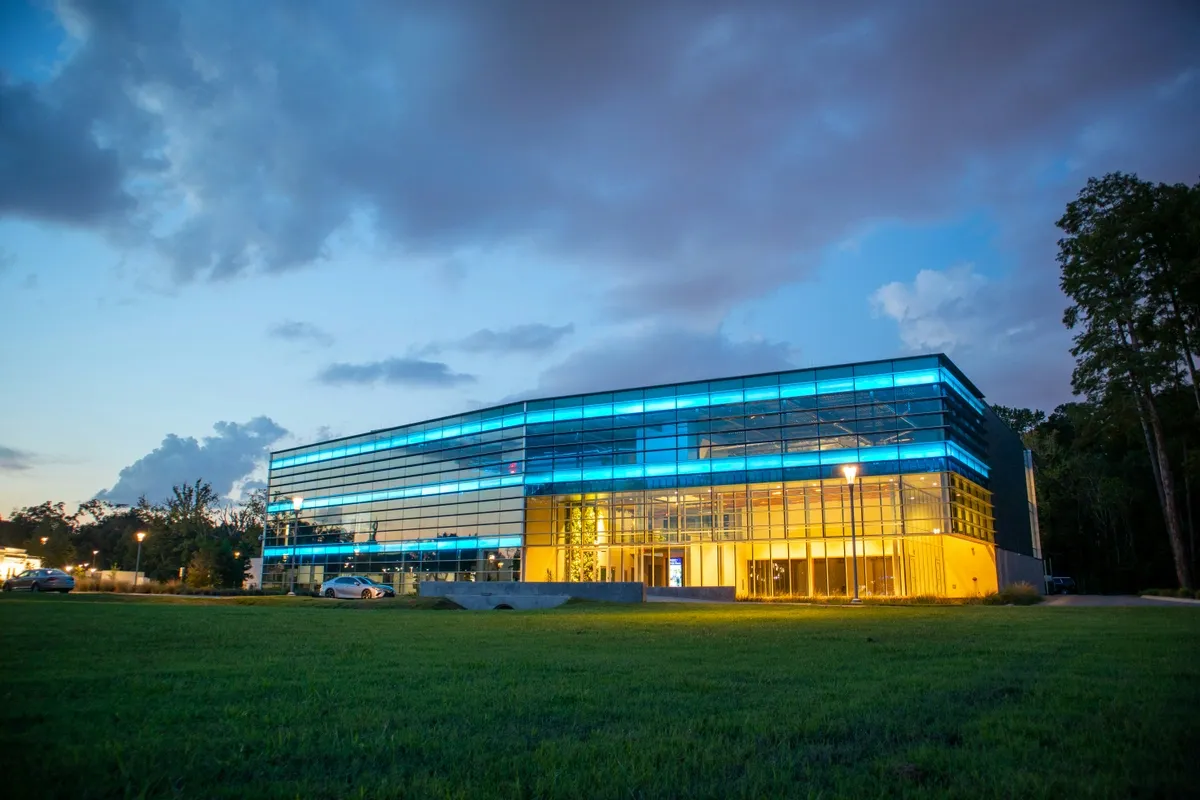
Integrating smart building technologies into architectural design is revolutionizing the way buildings operate, enhancing energy efficiency, occupant comfort, and overall operational effectiveness. By incorporating IoT devices, sensors, and automation systems, architecture firms can create intelligent environments that optimize resource usage and provide adaptive, personalized experiences for occupants. As the demand for sustainable and efficient building solutions grows, understanding and implementing these advanced technologies becomes crucial for the future of architectural design.
Understanding Smart Building Technologies
Smart buildings, also known as intelligent buildings, utilize automated processes to manage operations such as heating, ventilation, air conditioning (HVAC), lighting, security, and other environmental systems. These operations respond dynamically to occupancy levels and external conditions, providing enhanced efficiency and user comfort (source). Smart building technology encompasses both software and hardware designed to make buildings more automated, responsive, and efficient (source).
Key Components and Systems
IoT Sensors and Devices: These are fundamental to smart buildings, monitoring conditions, events, and performance while offering insights into building and occupant needs. Examples include temperature sensors, electricity meters, sub-meters, and occupancy and CO2 sensors (source).
Integration: Effective integration ensures seamless communication between all components, allowing the building to function as a cohesive whole rather than a collection of siloed systems. This capability enhances the building’s overall functionality.
Secure Connectivity: Robust connectivity solutions, including cellular and WiFi-based networks, ensure that increased connectivity does not lead to new vulnerabilities. Wireless protocols for smart buildings provide low power, long-range connectivity, crucial for maintaining secure interactions between devices (source).
Smart Building Platform: This platform acts as the central hub of an intelligent building, utilizing advanced analytics and machine learning to implement automation strategies, optimize energy efficiency, streamline maintenance, and track key performance indicators (source).
Current Trends and Advancements in Smart Building Technologies
Recent trends highlight the integration of IoT and AI, which significantly enhance smart building capabilities. Advanced HVAC systems use AI for optimized climate control, while predictive maintenance technologies preempt equipment failures (source). Sustainability is another major trend, with systems monitoring water usage, waste production, and resource consumption. Additionally, AI-enabled security systems detect unusual activities, and modern air filtration and purification systems ensure high indoor air quality, prioritizing occupant health and well-being (source).
The evolution of smart building technology represents a shift from traditional building management to a more integrated and intelligent approach, driven by ongoing technological advancements. This transition leads to buildings that are more efficient, sustainable, and user-centric (source).
In summation, smart building technologies harness IoT, AI, and other innovations to create intelligent structures that optimize energy use, enhance security, and improve occupant comfort. These technologies continue to evolve, shaping the future of efficient, sustainable, and user-focused building environments.
Benefits of Smart Building Technologies in Architectural Design
Integrating smart building technologies into architectural design offers numerous benefits, significantly enhancing energy efficiency, occupant comfort, and operational efficiency.
Enhanced Energy Efficiency
Smart buildings utilize artificial intelligence and machine learning to optimize resource usage, leading to substantial reductions in energy consumption. For example, smart HVAC controls and smart lighting systems adjust based on occupancy and external conditions, ensuring energy is only used when necessary. This dynamic adjustment can lead to energy savings of 30-50% (source). Additionally, automated window shading systems help manage natural light and temperature, further reducing the need for artificial lighting and climate control.
Improved Occupant Comfort and Productivity
Smart building technologies contribute to creating a comfortable and productive environment for occupants. Intelligent climate control systems maintain optimal temperature and air quality, while smart lighting systems adjust to natural circadian rhythms, enhancing wellbeing and productivity (source). Personalized spaces, where individual preferences for lighting and temperature can be set, further enhance occupant satisfaction. Factors such as acoustics, lighting, and thermal comfort are all finely tuned to create an optimal living or working environment (source).
Operational Efficiency and Cost Savings
Smart buildings prioritize efficiency, employing systems that reduce energy usage and operational costs. Automated systems monitor and control building operations in real-time, using sensors to collect data on occupancy, temperature, humidity, and other parameters (source). Predictive maintenance technologies can preempt equipment failures, reducing downtime and extending the lifespan of critical infrastructure components. This proactive approach not only ensures smooth operations but also translates into significant cost savings over time (source).
Minute7’s Role
Minute7, with its advanced time tracking and expense reporting solution, enhances the operational efficiency of architecture firms adopting smart building technologies. Seamlessly integrating with QuickBooks, Minute7 allows for efficient tracking and reporting of time and expenses, aiding in clear and concise billing and payroll data. This capability is crucial as firms streamline their operations to embrace and integrate smart building technologies.
Implementing Smart Building Technologies in Architectural Projects
Integrating smart building technologies into architectural projects requires meticulous planning and collaboration. Early-stage planning and engagement with technology experts are crucial for seamless integration. Effective data generation and utilization are key to making informed decisions about building systems. IoT-connected sensors and devices, coupled with digital applications, enable real-time monitoring and control of various factors such as equipment functionality, energy use, and environmental conditions (source). These insights allow for optimal resource planning and usage.
Architectural technology, particularly Building Information Modeling (BIM), is indispensable in smart building projects. BIM provides a unified platform for creating comprehensive digital representations of building projects, incorporating data on both physical and functional attributes. This holistic approach fosters collaboration among architects, engineers, and other stakeholders, ensuring that smart technologies are seamlessly integrated into the fabric of the building (source).
Case Studies of Successful Smart Building Projects
Several exemplary projects highlight the successful implementation of smart building technologies:
-
Ramboll’s School Building in Scotland: Utilizing architectural design software, Ramboll designed a school to meet new thermal comfort standards. By simulating the performance of the heating and air conditioning system during winter, engineers could optimize the system early in the design process (source).
-
The Element Office Building in Athens: This project used simulation modeling software to assess the solar performance of external movable screens on an hourly basis. The modeling ensured optimal thermal comfort and daylighting, significantly reducing energy consumption (source).
Challenges and Solutions in Integrating Smart Technologies
Integrating smart technologies in building projects comes with challenges such as budget constraints, technological compatibility, and user adoption. Performance risks due to reliance on specific energy sources and the complexity of projects can also pose issues (source).
To address these challenges, leveraging Environment-of-Things (EoT) technology is effective. EoT includes smart building solutions informed by environmental conditions, such as sensors that automatically adjust windows or HVAC systems in response to weather. This technology supports sustainability goals, like Zero Net Energy (ZNE), by enabling adaptive responses to environmental changes (source).
Key elements for smart building management include IoT sensors, analytics for intelligent systems, smart building products, and robust connectivity networks. Technologies like smart lighting, HVAC systems, and preventative maintenance systems are essential for achieving operational goals (source).
Minute7, with its advanced time tracking and expense reporting solution, supports architecture firms in managing these complex projects. By integrating seamlessly with QuickBooks, Minute7 ensures efficient tracking and reporting of time and expenses, aiding firms in maintaining clear and concise billing and payroll data. This capability is pivotal as firms navigate the complexities of integrating smart building technologies.
Embracing Smart Technologies for the Future of Architectural Design
The integration of smart building technologies into architectural design is not just a trend but a transformative approach that enhances the functionality, efficiency, and sustainability of buildings. By leveraging IoT devices, sensors, and advanced automation systems, architecture firms can create intelligent environments that offer significant benefits in terms of energy efficiency, occupant comfort, and operational cost savings.
Smart building technologies provide a dynamic and responsive infrastructure that adapts to the needs of occupants and the environmental conditions, ensuring optimal resource usage and improved indoor experiences. The successful implementation of these technologies requires thoughtful planning, collaboration with tech experts, and the use of sophisticated tools like Building Information Modeling (BIM) to ensure all systems work harmoniously.
Architecture firms that embrace these innovations can set themselves apart by delivering projects that are not only state-of-the-art but also environmentally responsible and economically efficient. However, the journey towards smart building integration is not without its challenges. Issues such as budget constraints, technological compatibility, and user adoption need to be carefully managed to realize the full potential of these systems.
Minute7 plays a vital role in this evolving landscape by providing robust time tracking and expense reporting solutions that integrate seamlessly with QuickBooks. This integration ensures that architecture firms can efficiently manage their projects, maintain accurate billing and payroll data, and ultimately streamline their operations. By supporting firms in tracking time and expenses effectively, Minute7 helps them navigate the complexities associated with adopting smart building technologies, thereby contributing to the successful realization of cutting-edge architectural projects.
As the industry continues to evolve, staying ahead with innovative solutions like smart building technologies and reliable tools like Minute7 will be crucial for architecture firms aiming to deliver superior value and efficiency in their projects. Embracing these advancements not only meets the growing demand for intelligent, sustainable buildings but also positions firms at the forefront of modern architectural design.



